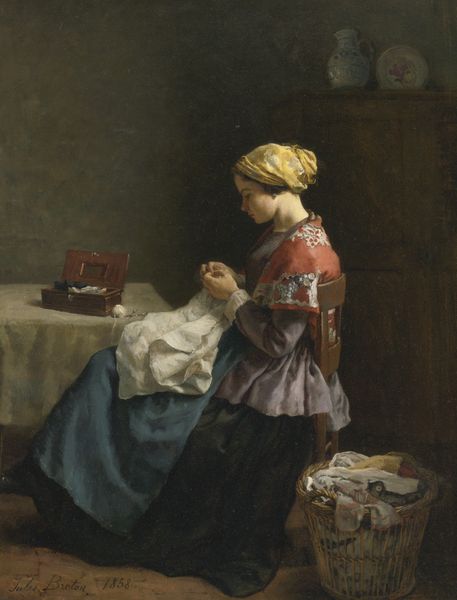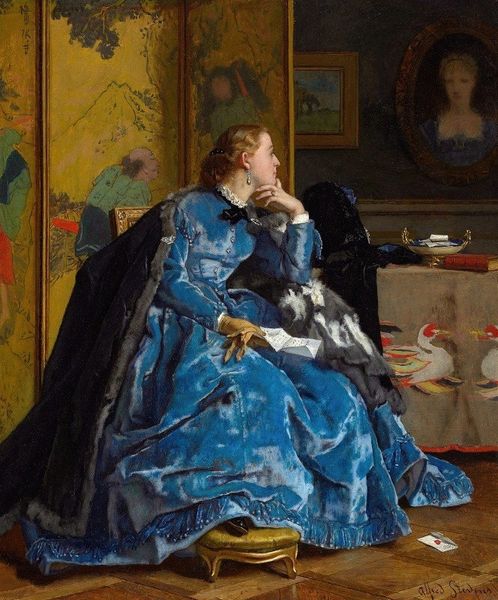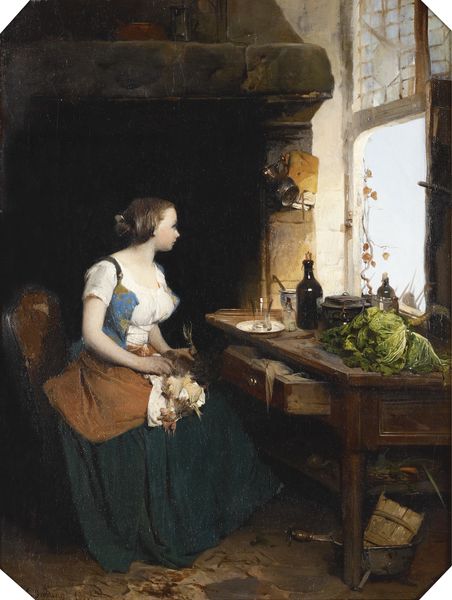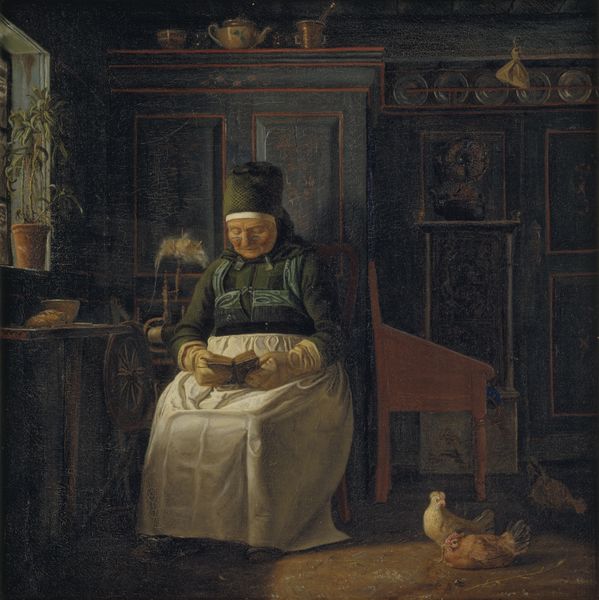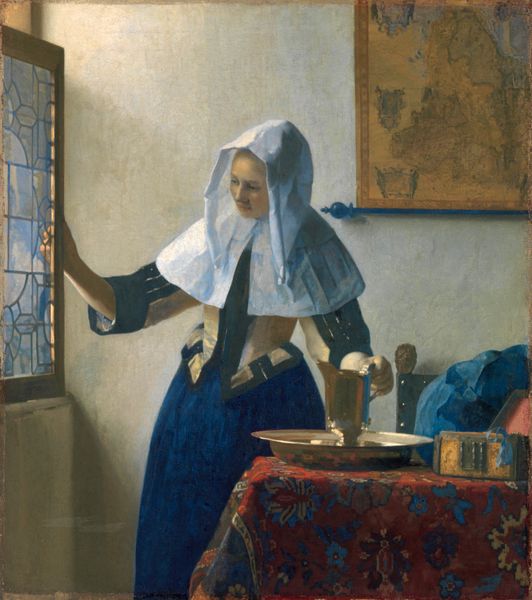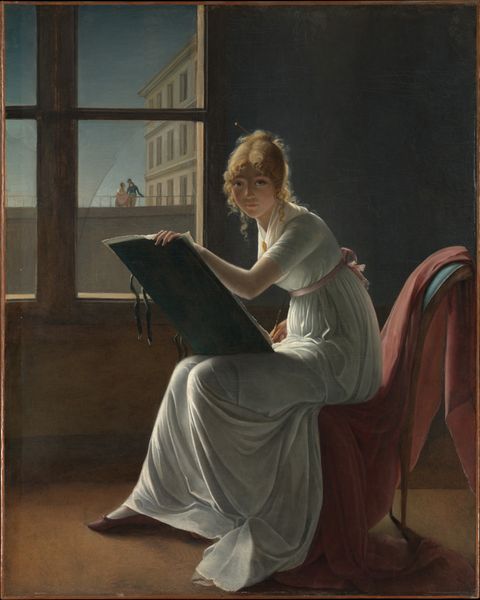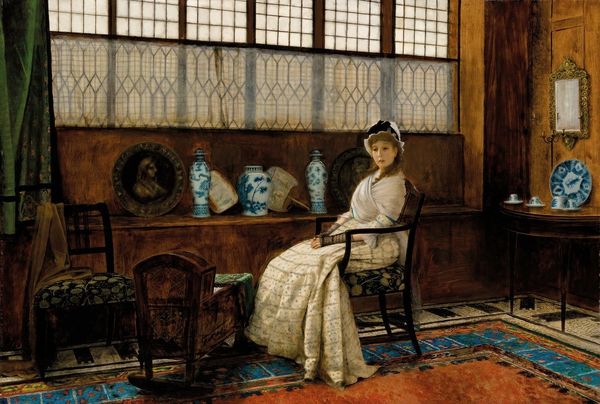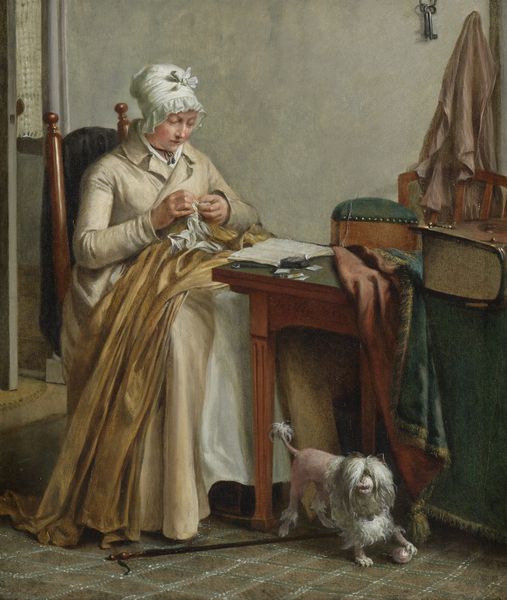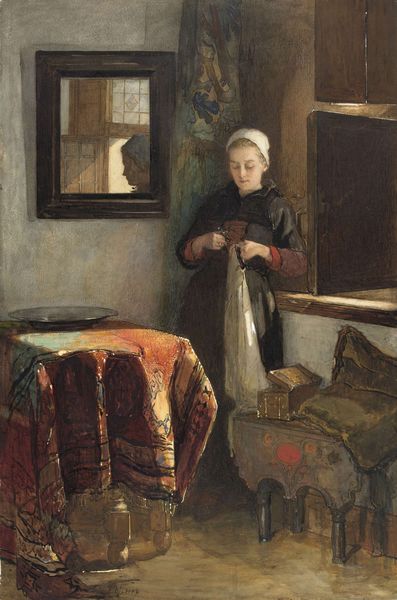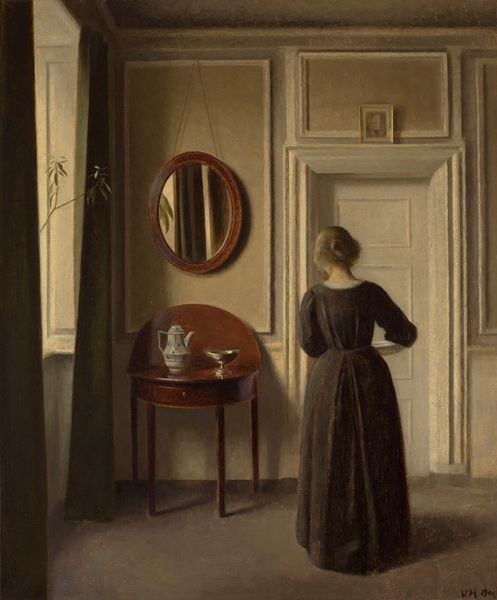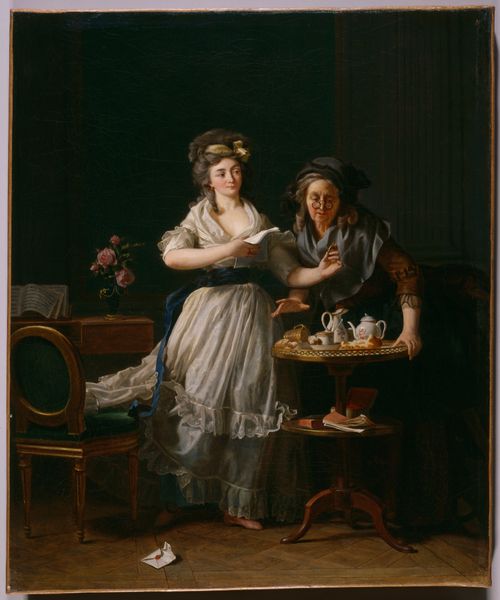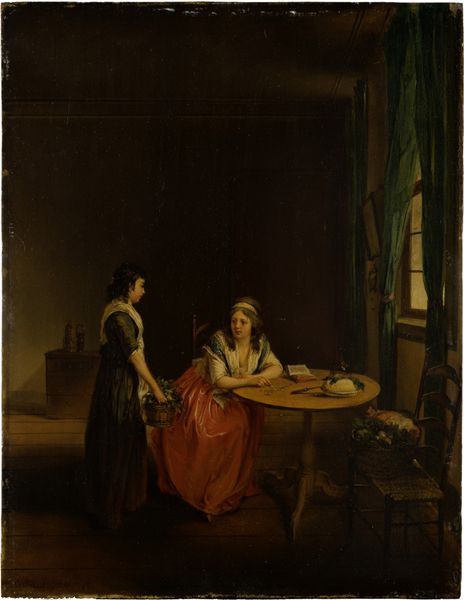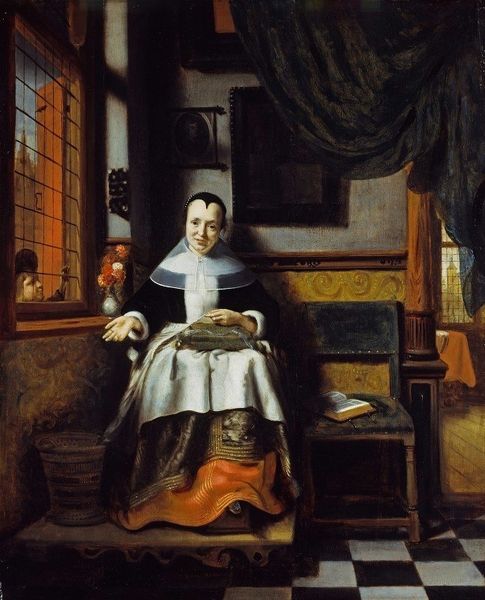
painting, oil-paint
#
portrait
#
painting
#
oil-paint
#
oil painting
#
genre-painting
#
rococo
Dimensions: height 46.8 cm, width 39 cm
Copyright: Rijks Museum: Open Domain
Editor: Here we have "Dutch Girl at Breakfast," an oil painting from around 1756 by Jean-Étienne Liotard. There’s such an intimate feel to this genre painting of a young woman. The composition and subdued lighting add a layer of tranquility, as though we’re catching her in a very private moment. What stands out to you? Curator: It’s interesting to consider this in the context of 18th-century European society. These genre scenes were popular amongst the emerging middle class. The detail afforded to the interior—the clothing and domestic setting—suggest a certain level of affluence. This image functions, in a way, as aspirational; a way to display domestic virtue and bourgeois respectability. Editor: I see what you mean about respectability. Her simple dress and actions could signify modesty. Would you say the painting enforces certain expectations for women of the time? Curator: Absolutely. Paintings like these reinforced social norms, offering moral instruction through visual representation. This quiet, domestic scene implies an ideal for feminine behavior. What do you make of her averted gaze and her position near the center of the picture? Editor: Her gaze does add a sense of mystery and introspective feeling to it. It invites contemplation from us. Considering that portraits often represented wealthy elites and rulers, it makes me wonder about the public perception of everyday life then. How novel was it? Curator: Good question! The popularity of genre paintings signalled a shift towards appreciating, or perhaps idealising, the everyday lives of ordinary people. They played a significant role in shaping public opinion and influencing social behaviors. The Dutch Girl epitomises the burgeoning importance of private life during the rise of bourgeois culture. Editor: That's so interesting! Now I view it less as just a peaceful picture and more as an insight into 18th-century values. Curator: Indeed, art often holds a mirror to society, reflecting our aspirations, expectations, and even our subtle biases.
Comments
rijksmuseum about 2 years ago
⋮
One of Liotard’s few paintings in oil and even rarer genre pieces, this work is his most concrete homage to the Dutch masters of the 17th century. Liotard has composed an interior reminiscent of those depicted by Vermeer and De Hooch, but with modern, 18th-century Dutch furniture. It is possible that he was inspired by a stay at Delft, where a cousin was a pastor of the Huguenot church. The painting in the background shows the interior of the Nieuwe Kerk there.
Join the conversation
Join millions of artists and users on Artera today and experience the ultimate creative platform.

